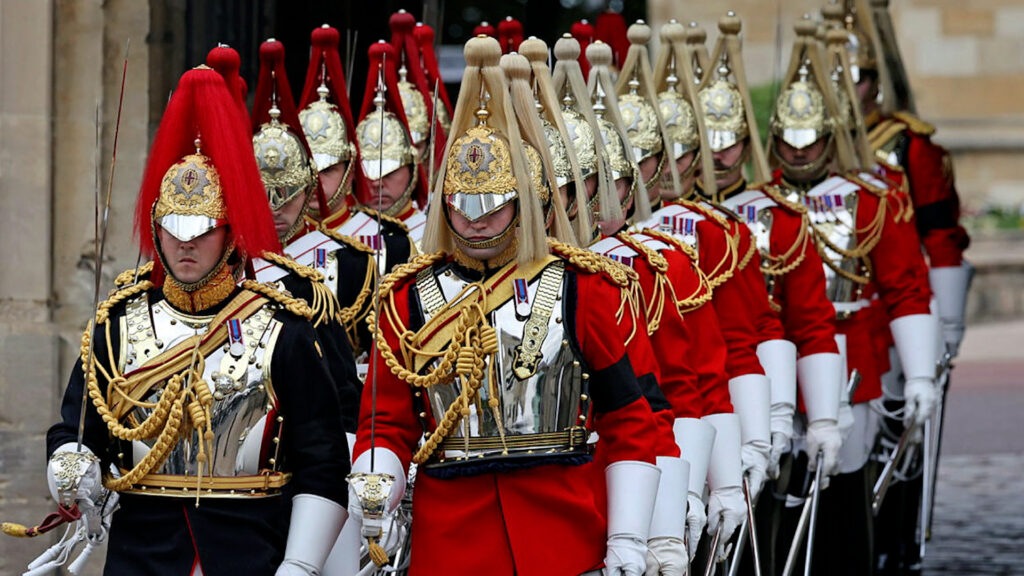
The Life Guards are one of the most distinguished and oldest regiments in the British Army, with a history that spans over three centuries. As part of the Household Cavalry, they play a dual role as both ceremonial troops and operational soldiers, embodying tradition and excellence.
Historical Background
The origins of The Life Guards date back to the mid-17th century. The regiment was formally established in 1660 when King Charles II was restored to the throne. This was a period marked by political turbulence and the aftermath of the English Civil War. The formation of The Life Guards was intended to provide personal protection for the King and ensure the security of the monarchy. Initially, The Life Guards were composed of loyalist troops who had accompanied Charles II during his exile in the Netherlands.
Throughout the years, The Life Guards have been involved in numerous historical conflicts and significant events. They played a crucial role in the Battle of Sedgemoor in 1685, which was the last pitched battle fought on English soil. During the Napoleonic Wars, The Life Guards were part of the British forces that fought in the Peninsular War and at the Battle of Waterloo in 1815, where they distinguished themselves with bravery and tactical acumen.
Ceremonial Duties
The Life Guards are perhaps most visible in their ceremonial role, a tradition that has become synonymous with British pageantry. They are one of the two regiments that form the Household Cavalry, the other being The Blues and Royals. Their duties include the iconic Changing of the Guard at Buckingham Palace and the daily Guard Mounting at Horse Guards Parade in London. These ceremonies are not just for show; they symbolize the historical continuity and the steadfastness of the British monarchy.
The ceremonial uniforms of The Life Guards are among the most recognizable military dress in the world. The soldiers wear scarlet tunics, white plumed helmets, and cuirasses, which are polished metal breastplates. These uniforms, combined with the magnificent black horses they ride, present a striking image that has captivated the public and tourists alike.
Operational Role
While The Life Guards are well known for their ceremonial duties, they are also fully operational soldiers. The regiment forms part of the Household Cavalry Regiment, which operates as an armored reconnaissance unit. This dual role demands that the soldiers are highly trained and versatile, capable of transitioning from ceremonial duties in London to operational deployments in various conflict zones.
In recent decades, The Life Guards have served in numerous international conflicts and peacekeeping missions. They have been deployed to Northern Ireland during the Troubles, the Balkans during the Yugoslav Wars, Iraq, and Afghanistan. In these modern operational roles, The Life Guards have demonstrated their adaptability and professionalism, often engaging in complex reconnaissance and intelligence-gathering tasks.
Training and Recruitment
The rigorous training that Life Guards undergo is a testament to the high standards maintained by the regiment. Recruits must complete the standard 14-week British Army basic training before moving on to the demanding training specific to the Household Cavalry. This includes equestrian skills, ceremonial drill, and the technical aspects of armored reconnaissance. The training ensures that soldiers are well-prepared for both their ceremonial and operational responsibilities.
Recruitment into The Life Guards is highly competitive. Historically, many members came from noble or aristocratic backgrounds, but today, recruitment is open to all, provided they meet the stringent requirements. The regiment seeks individuals who exhibit not only physical prowess but also dedication, discipline, and a sense of tradition.
Cultural Impact and Legacy
The Life Guards have left an indelible mark on British culture and history. Their presence at state occasions, such as the Trooping the Colour and state funerals, adds a sense of grandeur and continuity. Their role in these ceremonies reinforces the connection between the military and the monarchy, highlighting the historical significance of both institutions.
In summary, The Life Guards embody a unique blend of historical tradition and modern military capability. From their inception in the 17th century to their current role in the British Army, they have upheld a standard of excellence that reflects their storied past and their commitment to serving both the Crown and the country. Their dual role as ceremonial and operational soldiers makes them a quintessential part of Britain’s military heritage.